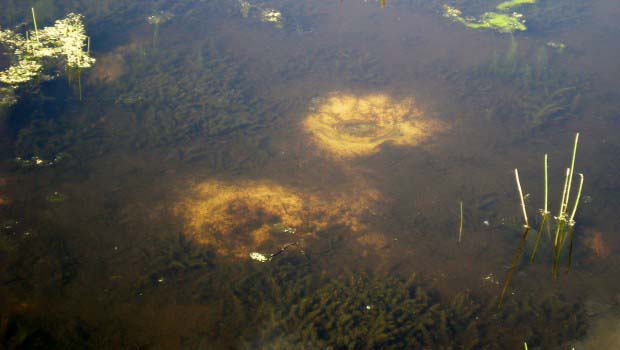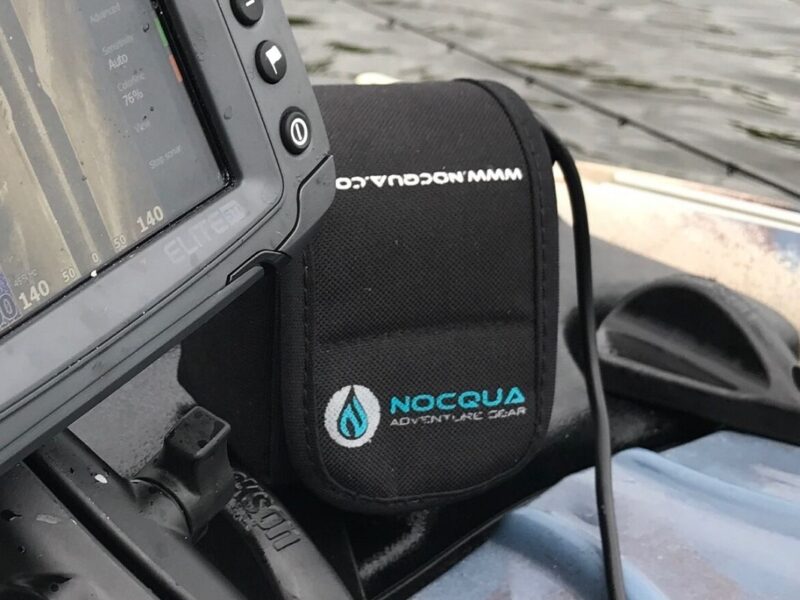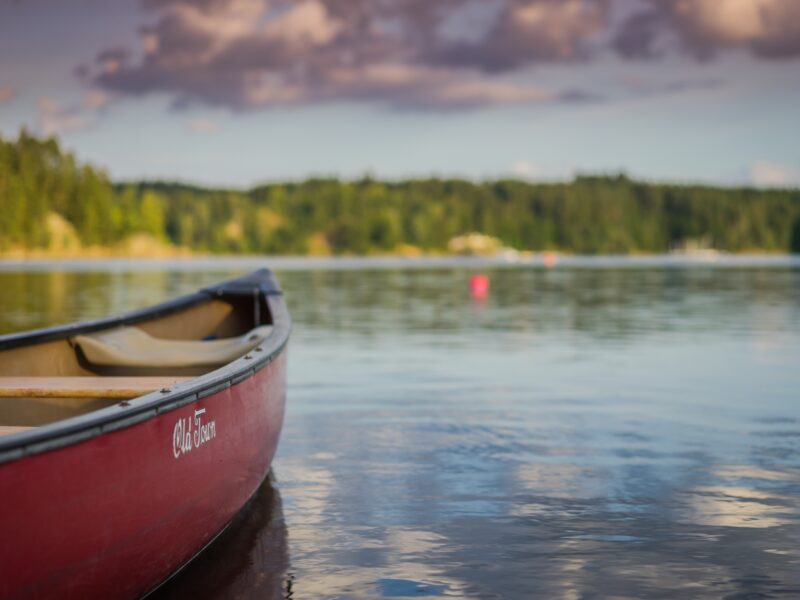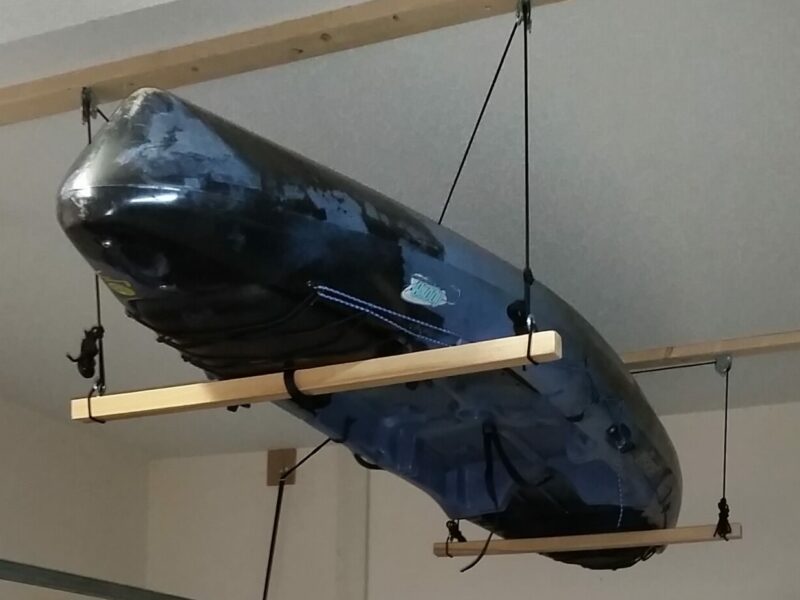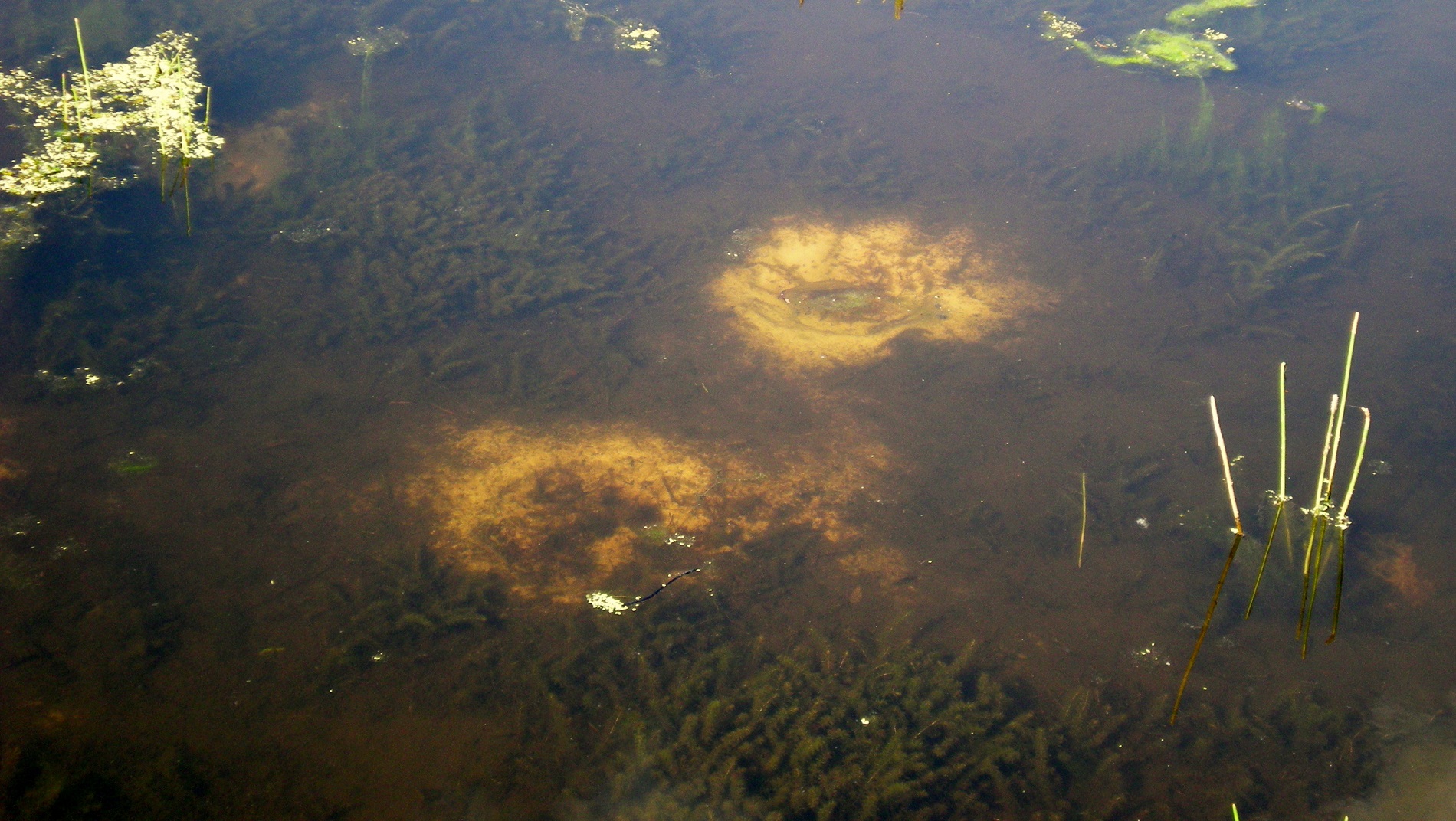
Spawn Fishing for Florida Bass
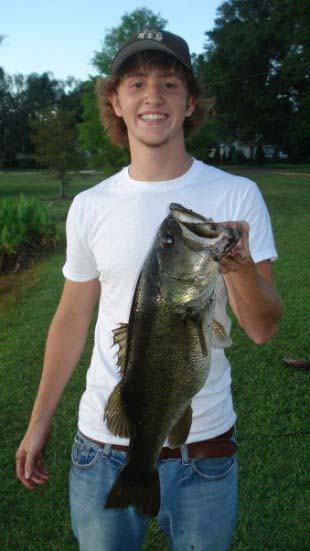 Spring Spawn
Spring Spawn
The Spring brings with it the time for the bass spawn. Bass spawning season presents great opportunities to catch trophy-sized bass with a particular emphasis on sight fishing. The advantage that the spawn provides is large stationary male and female bass that are mating and protecting their eggs in easily distinguishable beds. Although half of the work is done given you know the location of the fish, it is still a challenge to land one of these spawning bass. They eat a lot less while protecting their nests, and will typically only bump or snap at your lure to spit it out of their bed. However you will occasionally get one bass that holds on, and that is what makes it all worthwhile. Some bass anglers say that fishing the spawn can endanger the bass population and so they refrain from it, however it offers a great fishing opportunity and a recent study at the University of Florida has shown that it actually does not adversely affect the bass populations if proper precautions are taken.
When is the Florida Spawn?
The bass spawning period is different throughout all areas of the United States depending on when the water reaches the ideal spawning temperature. Bass start spawning once the water reaches a temperature in the mid 60’s and is consistent for about a week. They continue to spawn until the water reaches 80 degrees, with most spawning actually taking place between 65 and 70 degrees. In Florida, the spawn typically begins in January and lasts through May, with the best fishing occurring in late February through early April. The months are subject to change depending on your location in the state as well as weather patterns. A good indicator of a proper spawning ground is when the lake has a high water level, which is indicative of incoming warm spring rains, and provides areas for bass to makes their nests away from other predators.
Spawn Fishing Gear
Using the proper fishing gear for the spawn will make your time out on the water that much more successful. The bass targeted during spawn fishing are typically large bass that will be bumping, spitting, and occasionally swallowing your lure. Therefore, the best rod to use is a sensitive and lightweight rod with a high graphite content so you are able to feel subtle bumps and strikes. I personally use the Bass Pro Shops CarbonLite 6’6’’ M Spinning Rod because it features a carbon fiber construction that transmits vibrations very well. It is also an incredibly lightweight rod, with titanium guide inserts for strength, and has an open handle for increased sensitivity. However, I would also recommend the Shakespeare Ugly Stik Lite 6’6’’ M Spinning Rod, because it is an obnoxiously strong rod that offers great sensitivity for the price.
A quality and well maintained reel is important for spawn fishing because this is the time when most large bass are taken. It is best to use a reel that has a lower gear ratio, around 5.0:1, so that you can slow down your lure retrieval without losing any action. Also, the lower gear ratio will give you more power when fighting bigger bass. Spinning reels are typically best to use for this situation because they feature better drag systems, which you will definitely use. Baitcasting reels have started to be merged into spawn fishing as well, because they provide more accurate casts which are needed to hit the perfect spot on the nest. It is best to have both setups on hand if that is possible. I personally use the Pflueger President XT Spinning Reel, size 35 with a 5.2:1 gear ratio, paired with my CarbonLite rod for spawn fishing.
A spawning bass is very cautious and anxious because it is keeping an eye out for anything that can threaten its eggs. If the bass can see your line then it will most likely get spooked or ignore your lure so it is necessary to use a fluorocarbon leader. When selecting line I typically like to use a 20-30lb braid paired with a 10ft fluorocarbon leader. Some anglers prefer to use 10-20lb fluorocarbon as the main line; however, I like the advantages that braided line offers in terms of smooth casting, no line memory, high strength to diameter ratio, and lack of stretch. These are all necessary for instant hook-sets.
The key lures for spawn fishing are soft plastics, jigs, and crankbaits. If you have these three in your arsenal, then you can’t go wrong. Soft plastics, specifically creature baits, worms, and lizards, are the most widely used spawn lure by bass anglers, sometimes with a lightweight split-shot or bullet weight near the head of the lure. It is necessary to work the lure excruciatingly slowly in order to entice the bass into biting, because slow bedding bass are not going to actively pursue your lure at this time of year. The best colors for soft plastics depend on the water clarity but my personal favorites are June Bug and Baby Bass colors. Jigs are also suited for spawn fishing since they are already designed to be worked slowly, and they present a unique presentation that can be used to bounce along the bottom of the nest. In addition, topwater lures and crankbaits can be used slowly, or to buzz over nests and produce reaction strikes, both of which can be effective when no other presentations are working.
Sharp quality hooks are a necessity for fishing the spawn. Bass are biting sparingly and spitting out and moving baits rather than actively striking. Therefore you should take every advantage you can get and purchase sharper hooks that will increase your chances of penetrating the bass’ mouth when it subtlety bumps your lure. Invest in some of the more quality hooks including Lazer TroKar, Owner, or Gamakatsu.
One of the best investments that you can make for spawn fishing, and bass fishing in general, is purchasing a quality pair of polarized sunglasses. Polarized glasses will cut the glare off of the water and let you see straight through to bottom to locate bass beds. This is incredibly helpful especially since you will be doing a lot of sight fishing for these spawning bass. In addition, be inconspicuous while fishing and wear neutral colors.
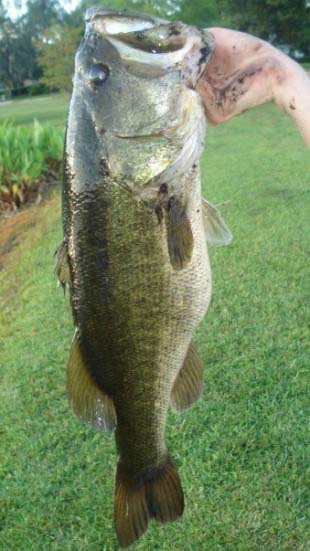
Spawn Fishing Techniques
Spawn fishing will require a lot of repetition and patience in the technique. Once you have located the nest of a bedding bass, approach it slowly and stealthily as to not spook the bass. Most pros are able to determine very quickly if a bass is able to be caught or not by the behavior it exhibits when you approach and cast to the nest. A bass that darts away is less likely to be caught then one that hangs tight to the nest and continues to guard it. I typically stay about ten feet off of the nest; that way I am able to see the bass and my lure while maintain enough distance to make the fish feel non-threatened.
Cast just beyond the bed (this is why I use a long fluorocarbon leader) and then work the lure into the edge of the bed very slowly and let it pause. Wait a little longer, then crawl the lure to the center of the bed and let it sit again. Your goal is to make the bass anxious about the lure being near its eggs. Crawl the lure again, and twitch it very lightly while it is sitting in the middle of the nest. Now keep an eye out for what the bass does; it may bump the lure or it may pick it up with its mouth to move it. If the hook goes past the bass’ jaw, then set the hook. The majority of the time bass are only picking up the lure by the tail or side to move it from the nest rather than initiating a full-on strike, which makes visual contact very important. Be warned that if you yank the lure from the bass’ mouth without a hook-set, then it will be much more wary the next time. This does not mean that it is uncatchable; it just may take more time for the bass to strike again.
Keep your line tight while you are fishing so you can feel everything that is going on in your rod. In addition, always cast to the same area after a catch, as bedding bass are often stacked up in the same location. One other helpful piece of advice is to rig your lures weedless since you will be pulling it through vegetation and into beds; but remember to barely pierce the rubber lure so that when the bass picks it up the hook will pop out easily.
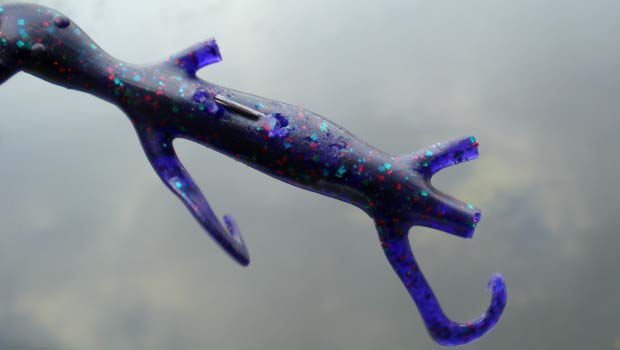
Bass really will try to move your lure gently from their nest rather than striking at it; note the torn June Bug Lizard legs and tail from aggressive hookset attempts.
Where are the Bass Beds?
Largemouth bass begin moving into shallow areas of water to spawn when the water reaches the mid 60’s. Males arrive at the beds first, and then females soon follow to begin mating. Most spawning beds are made in less than five feet of water because it warms up the quickest and can provide sunlight and warmth for the eggs. However, this all depends on the clarity of the water. Bass will make their beds deeper in clear water because the sunlight will penetrate further. Males also prefer to create nests that are sheltered from wind and weather by using natural or artificial cover such as logs, docks, or vegetation. If you want to get really crafty you can arrange some rocks and logs ahead of time in a formation that bass will like to convince them to bed in an area that you like to fish.
Searching for the beds of spawning bass is relatively easy if you know what to look for. Look through the water in shallow areas and you will see white or black semi circles or full circles on the lake bed, from one to three feet in diameter. Males will pick these nesting sites that have sandy or gravel bottoms which makes the beds easy to spot, however some are not as obvious depending on the lake bottom substrate. The males guard the nest once they have spawned and are typically nearby even if you do not see them. If you find a nest that appears to be abandoned, back off for a while to allow the spooked fish time to move back to its nest. Keep in mind, most large bass are taken during the spawn.
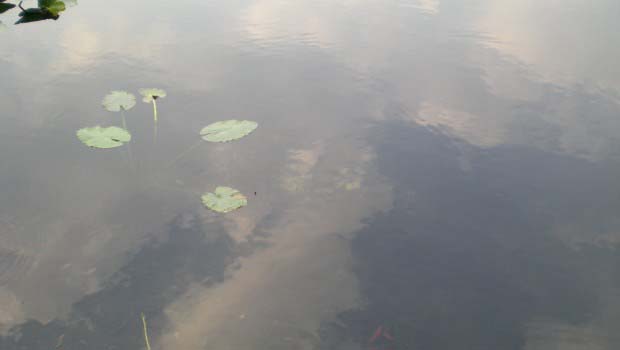
This one is hard to see, but just to the right of the lily pads is a sandy-bottomed bass bed with a bass hanging out right on the border. Polarized glasses help quite a bit.
Bass Considerations
Bass are under much greater stress levels during spawning and therefore need to be handled with more care than usual. If it is possible, try to remove the hook from the bass’ mouth while it is in the water. Otherwise attempt to reduce the amount of time you keep the bass out of the water. It is a good idea to practice catch and release during the spawn. Bass are particularly vulnerable and can die more easily which would leave an unattended nest for predators. Fishing the bass spawn is exhilarating! Just be sure to take the proper precautions to protect the bass and to ensure future fishing.
Heath Anderson
Heath lives in North Carolina and has been an avid fisherman and all around outdoorsman for the past three decades. In addition to enjoying the outdoors, Heath has been active in the online fishing industry since 2010, teaching and sharing reviews of fishing products on BassGrab.com to help anglers catch more and look good while doing it.
All stories by: Heath Anderson


